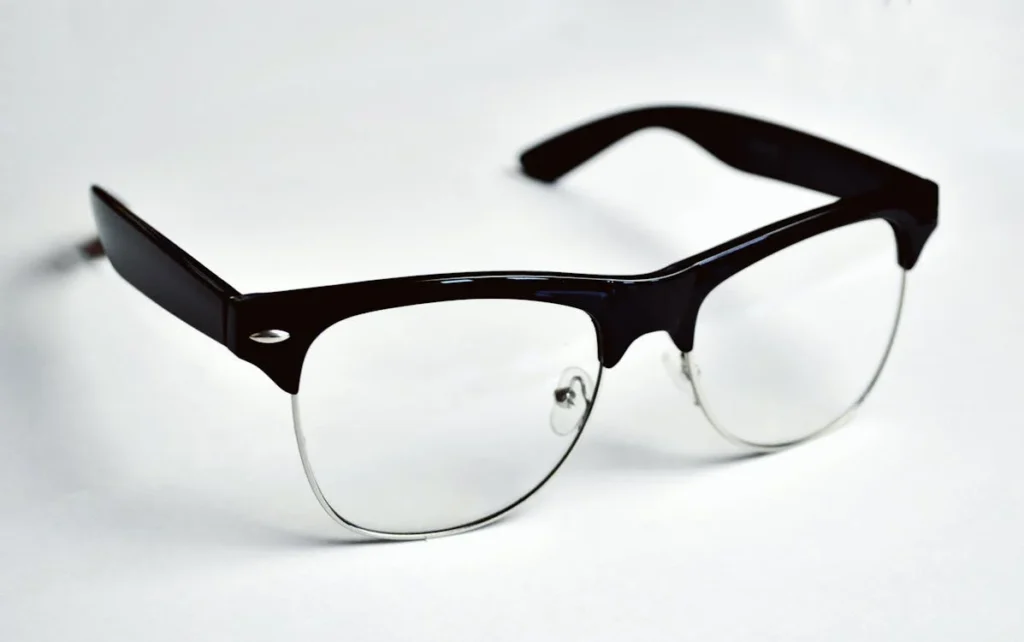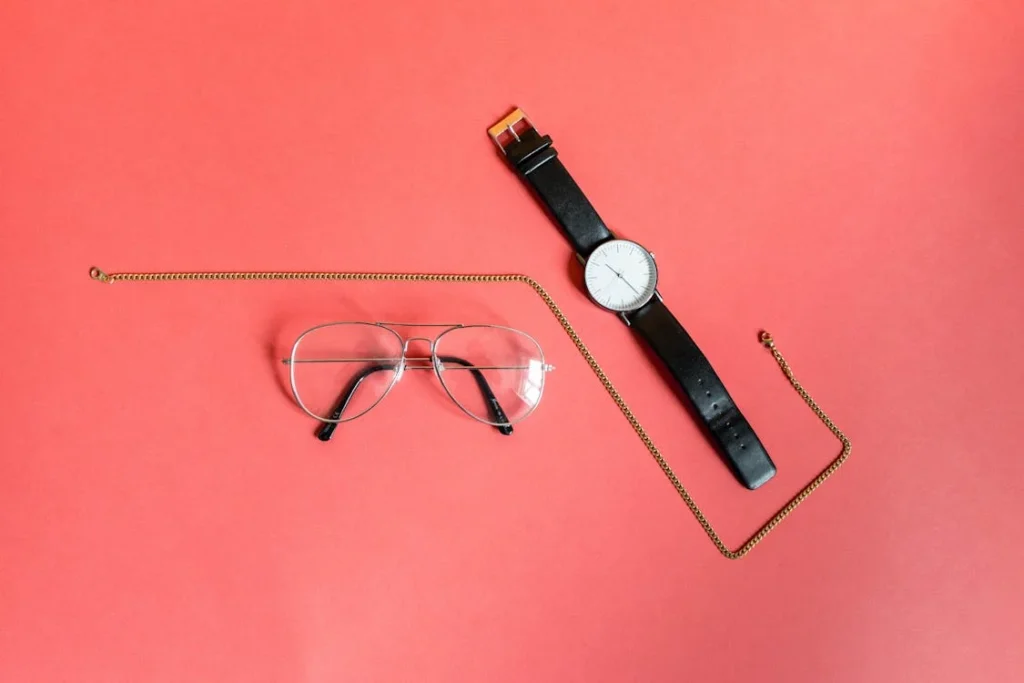Technology has changed the way people with visual impairments experience the world. From screen readers to voice assistants, innovative solutions have made everyday tasks more accessible. One of the most exciting advancements in assistive technology today is smart glasses for the blind. These high-tech devices are designed to help visually impaired individuals recognize objects, navigate spaces, and interact with their surroundings in ways that were once impossible.
Unlike traditional mobility aids such as white canes or guide dogs, smart glasses use artificial intelligence (AI), cameras, and voice feedback to provide real-time information. Whether it’s identifying faces, reading text, or giving directions, these glasses bring a new level of independence to individuals with visual impairments.

How Smart Glasses Work for the Visually Impaired
Smart glasses are wearable devices equipped with cameras, sensors, AI-powered software, and audio feedback systems. Unlike standard eyeglasses, they don’t restore vision, but they interpret and describe the surroundings to the user in real time.
These glasses act as a digital assistant, helping blind or visually impaired individuals navigate their environment with greater confidence.
Camera and Object Recognition Technology
One of the core features of smart glasses is their built-in camera, which captures the user’s surroundings and processes the images using artificial intelligence. The AI can identify objects, people, and text, converting visual information into spoken descriptions.
For example, if a person wearing smart glasses enters a room, the device can scan the area and announce:
“There is a table to your right, a chair in front of you, and a door on your left.”
This feature makes indoor and outdoor navigation easier, reducing the risk of bumping into obstacles. The AI can also recognize familiar objects like keys, wallets, or mobile phones, making it easier to locate misplaced items.
Facial Recognition for Social Interactions
Recognizing faces can be one of the biggest challenges for blind individuals, especially in social settings. Smart glasses with facial recognition technology can help by identifying people and providing spoken alerts.
For example, if a friend or colleague approaches, the glasses can whisper into an earpiece:
“John is in front of you, smiling.”
This feature enhances social confidence, allowing users to engage in conversations without worrying about missing visual cues.
Some models even detect facial expressions, helping visually impaired individuals understand emotions like happiness, sadness, or surprise in real time.
Reading Assistance with Text-to-Speech Technology
Another breakthrough feature of smart glasses is real-time text reading. With Optical Character Recognition (OCR) technology, the glasses can scan printed or digital text and convert it into speech.
This allows users to read newspapers, books, menus, or even handwritten notes without needing assistance.
For example, when pointing the glasses at a document, the AI can read it aloud:
“Your coffee costs 200 rupees. The menu includes sandwiches, salads, and pasta.”
This technology is particularly useful for shopping, banking, and public transportation, allowing users to read signs, bills, and receipts independently.
Navigation and GPS Integration
For outdoor mobility, smart glasses often include GPS navigation and integration with mapping apps. These features guide users through streets, crosswalks, and public spaces by providing step-by-step voice directions.
If a user needs to walk to a nearby store, the glasses can say:
“Walk straight for 100 meters, turn left, and cross the street at the pedestrian crossing.”
Some smart glasses even use haptic feedback, where vibrations indicate turns or obstacles. This provides an extra layer of support, especially in noisy environments where audio cues might be hard to hear.

How Smart Glasses Are Improving Everyday Life for the Blind
Smart glasses are not just an advanced piece of technology; they are a life-changing tool that allows visually impaired individuals to regain independence in their daily lives.
From simple tasks like reading a menu to complex activities such as navigating crowded streets, these glasses make the world more accessible and interactive.
Enhanced Mobility and Safe Travel
For visually impaired individuals, navigating public spaces can be challenging, especially in unfamiliar environments.
Traditional mobility aids like white canes help detect obstacles on the ground, but they don’t provide information about overhead hazards, moving objects, or complex layouts.
Smart glasses solve this problem by acting as a digital guide, providing real-time feedback about surroundings.
If a user is about to encounter a low-hanging branch or an open door, the glasses can issue an alert:
“Obstacle detected ahead. Adjust your path slightly to the left.”
When using public transportation, smart glasses can identify bus numbers, train platforms, and metro station exits, helping users travel independently without having to rely on strangers for directions.
The glasses can also integrate with ride-hailing services, giving voice updates about estimated arrival times and vehicle details.
Shopping Without Assistance
Going to the grocery store or shopping mall often requires help from store employees or family members.
Smart glasses change this experience by allowing users to read price tags, recognize product labels, and even compare items on shelves without needing assistance.
For example, when scanning a product, the glasses might say:
“This is a 500g packet of rice, priced at 80 rupees.”
Some smart glasses even offer barcode scanning, allowing users to check product details such as ingredients, expiration dates, and nutritional information. This feature provides greater independence in making purchasing decisions.
Seamless Communication in Social and Work Environments
One of the biggest barriers faced by visually impaired individuals is non-verbal communication. In social or professional settings, people rely on facial expressions, body language, and visual cues to convey meaning.
Smart glasses help bridge this gap by identifying people and describing their emotions in real-time.
For example, in a workplace meeting, the glasses may whisper:
“Your manager is nodding in agreement.”
This allows users to participate more confidently in conversations, interviews, and networking events.
In professional settings, smart glasses can also read aloud presentations, identify speakers in a room, and provide live transcription of discussions, ensuring full participation in meetings.
Independence at Home and in Daily Tasks
Smart glasses are just as useful indoors as they are outdoors. At home, they can assist with reading medicine labels, identifying household objects, and recognizing faces of family members.
Some models integrate with smart home devices, allowing users to control lights, appliances, and door locks through voice commands.
When cooking, the glasses can provide audio-based recipe instructions, helping users follow steps without needing to read a cookbook.
They can also recognize common kitchen ingredients, such as spices or packaged foods, ensuring safety and convenience in meal preparation.

The Future of Smart Glasses and Accessibility
Smart glasses are already transforming the lives of visually impaired individuals, but the technology is still evolving.
Future advancements promise even greater accuracy, speed, and functionality, making these devices smarter, more intuitive, and seamlessly integrated into daily life.
Advancements in AI and Machine Learning
Artificial intelligence is at the heart of smart glasses, and as AI algorithms continue to improve, these devices will become even faster and more accurate in recognizing objects, reading text, and detecting faces.
Future smart glasses could use deep learning models to analyze environments in real-time and provide even more detailed descriptions of surroundings.
For example, instead of just identifying objects, AI could explain their context:
“There is a blue sofa with a patterned cushion on the left side of the room, next to a wooden coffee table with a cup on it.”
This level of detail could help users build a mental map of their environment, making navigation more intuitive and efficient.
Integration with Augmented Reality (AR)
Augmented reality (AR) is another exciting area that could enhance smart glasses for the blind. AR can create a virtual overlay of real-world surroundings, providing directional guidance, enhanced text-to-speech capabilities, and real-time alerts.
For instance, an AR-based navigation system could provide haptic feedback through the glasses’ frame, subtly guiding the user toward a destination without requiring audio cues.
This would be particularly useful in noisy environments, where voice instructions may be difficult to hear.
5G Connectivity for Faster Real-Time Assistance
With the expansion of 5G networks, smart glasses will be able to process and deliver information much faster. This will reduce delays in object recognition, facial identification, and text reading, allowing users to receive instant feedback.
Additionally, 5G connectivity will improve remote assistance features, where users can connect with sighted volunteers or AI-driven help desks.
Instead of waiting several seconds for an AI response, smart glasses will be able to stream high-quality live video to support agents, allowing for quicker and more precise guidance.
Voice-Controlled AI Assistants Built Into Smart Glasses
Many visually impaired individuals already rely on voice assistants like Siri, Google Assistant, and Alexa. Future smart glasses will likely integrate these AI assistants directly into the device, allowing users to perform hands-free tasks without needing a separate smartphone.
For example, users could:
- Ask for real-time navigation while walking.
- Get spoken reminders for important tasks.
- Control smart home devices, such as adjusting the thermostat or playing music.
- Dictate and send emails or messages without needing to type.
This integration will make smart glasses even more functional, allowing users to perform daily tasks with simple voice commands.
Miniaturization and Better Battery Life
One of the current challenges of smart glasses is size and battery life. Many models are still relatively bulky, and some require frequent charging. However, future designs will be lighter, more discreet, and energy-efficient, making them comfortable for all-day use.
Advancements in nanotechnology and flexible electronics may even lead to smart glasses that look indistinguishable from regular eyewear, removing the stigma sometimes associated with assistive technology.
A More Inclusive Future
As technology progresses, smart glasses will continue to push the boundaries of accessibility. Future improvements will focus on enhancing user experience, expanding functionality, and reducing costs, ensuring that more visually impaired individuals can benefit from these life-changing devices.
With AI, AR, and 5G-driven innovations, smart glasses are set to become a standard tool for accessibility, helping blind individuals interact with the world more independently than ever before.

The Role of Smart Glasses in Education and Employment
Education and employment are two areas where visually impaired individuals often face significant challenges. Accessing study materials, navigating classrooms or workplaces, and performing daily job tasks can be difficult without proper accommodations.
Smart glasses are revolutionizing how visually impaired students learn and how professionals work, creating more inclusive environments in schools and workplaces.
Enhancing Learning for Visually Impaired Students
Traditional education relies heavily on visual content, such as printed textbooks, whiteboards, and digital screens. Smart glasses, however, are helping visually impaired students access information in real time by converting written text into speech.
With built-in Optical Character Recognition (OCR), students can point their glasses at a book, and the device will read it aloud.
Some smart glasses also support math and science accessibility by describing graphs, equations, and charts.
Instead of relying on Braille textbooks, students can listen to explanations of diagrams, maps, and complex symbols, making subjects like physics, chemistry, and geography more accessible.
For students in interactive learning environments, smart glasses can provide real-time descriptions of experiments, group activities, and classroom settings, allowing them to follow along without needing additional assistance.
This fosters independent learning, giving visually impaired students greater confidence in academic settings.
Supporting Professional Growth in the Workplace
In professional environments, visually impaired employees often require specialized software and accommodations to perform their jobs efficiently.
Smart glasses are eliminating workplace barriers by allowing employees to read documents, navigate office spaces, and even participate in meetings without relying on external assistance.
For example, a visually impaired office worker can use smart glasses to:
- Read printed reports, emails, and spreadsheets aloud without needing a screen reader.
- Recognize colleagues during meetings using facial recognition software.
- Identify objects in the office, such as computers, desks, and files.
- Navigate through large office buildings with real-time directions.
Smart glasses also enable visually impaired professionals to work in fields that previously had limited accessibility, such as technology, finance, and customer service.
With AI-driven object recognition, employees can efficiently complete tasks that require identifying documents, scanning barcodes, or handling customer interactions.
Empowering Entrepreneurs and Independent Workers
For visually impaired individuals pursuing self-employment or entrepreneurial ventures, smart glasses provide an extra layer of independence.
Business owners can use these glasses to manage inventory, process transactions, and communicate with clients, allowing them to run businesses without depending on sighted assistants.
Freelancers and remote workers also benefit from smart glasses by accessing digital tools more effectively, making it easier to participate in virtual meetings, write proposals, and complete projects independently.
The integration of voice commands and AI assistants further enhances productivity, streamlining work tasks in a more accessible and user-friendly manner.
Breaking Barriers and Creating Inclusive Workplaces
As more companies adopt smart glasses as part of their accessibility initiatives, workplaces are becoming more inclusive for visually impaired professionals.
Employers are recognizing that investing in assistive technology not only supports equal opportunity but also unlocks the full potential of talented individuals who may have previously faced employment challenges.
With continued advancements, smart glasses will play an even bigger role in education, career development, and workplace accessibility, ensuring that visually impaired individuals can thrive in any learning or professional setting.

How Smart Glasses Are Revolutionizing Healthcare for the Visually Impaired
Healthcare is an essential part of life, but for visually impaired individuals, navigating medical appointments, understanding prescriptions, and managing personal health can be challenging.
Smart glasses are now bridging the gap in healthcare accessibility, making it easier for blind and low-vision individuals to receive medical care, track their health, and communicate with doctors.
Improving Accessibility in Hospitals and Clinics
Visiting a hospital or clinic often requires reading signs, forms, and instructions, which can be difficult for visually impaired patients.
Smart glasses equipped with real-time text reading and object recognition can help individuals identify room numbers, locate departments, and follow directional signs without assistance.
Some hospitals are also integrating smart navigation systems that allow visually impaired patients to wear smart glasses and receive step-by-step voice guidance to their destination. Instead of relying on hospital staff or volunteers, patients can move independently through medical facilities.
Reading Prescriptions and Medication Labels
Managing prescriptions is one of the biggest challenges for blind and visually impaired individuals. Medication bottles often contain small text, dosage instructions, and warnings that are difficult to read without assistance.
Smart glasses with AI-driven text recognition can scan medication labels and read the details aloud, ensuring that users take the correct dosage at the right time.
For example, when scanning a prescription bottle, the smart glasses might say:
“Take one tablet of paracetamol every six hours with food. Side effects may include dizziness and nausea.”
This feature reduces the risk of medication errors, allowing users to manage their health safely and independently.
Telemedicine and Remote Healthcare Access
With the rise of telemedicine, many patients now consult doctors remotely via video calls. Smart glasses are making this process more accessible by providing real-time audio descriptions, voice-activated controls, and integration with virtual healthcare platforms.
For visually impaired individuals, smart glasses can:
- Read aloud digital health reports and test results from online portals.
- Help schedule doctor’s appointments using voice commands.
- Assist in remote health monitoring by pairing with smartwatches and fitness trackers.
Doctors can also use real-time video streaming features in smart glasses to remotely examine wounds, rashes, or other health conditions, allowing visually impaired patients to receive medical attention without needing to visit a clinic.
Health and Fitness Tracking with Smart Glasses
Many visually impaired individuals use wearable fitness trackers to monitor their health, but these devices often rely on visual screens.
Smart glasses can speak real-time health data aloud, allowing users to track their heart rate, step count, calorie intake, and sleep quality without needing a smartphone or display.
Additionally, smart glasses with fall detection sensors can alert emergency contacts or healthcare providers if the user experiences a sudden fall or medical emergency.
This is particularly valuable for elderly individuals with vision loss or those with additional health conditions.
A Future of Accessible Healthcare
The integration of smart glasses into healthcare is redefining how visually impaired individuals interact with medical services.
From reading prescriptions and navigating hospitals to consulting doctors remotely, these innovations are making healthcare more accessible and personalized.
As technology continues to advance, we can expect even greater improvements in health monitoring, telemedicine, and medical accessibility, ensuring that visually impaired individuals receive the best possible care—without barriers.

The Role of Smart Glasses in Enhancing Personal Safety and Emergency Response
For visually impaired individuals, personal safety is a constant concern, especially when navigating unfamiliar environments, crossing busy streets, or dealing with emergency situations.
Smart glasses are now playing a crucial role in enhancing security, preventing accidents, and ensuring rapid emergency response when needed.
Avoiding Hazards in Public Spaces
Public spaces—whether streets, parks, or shopping centers—can pose unexpected hazards for visually impaired individuals. Uneven sidewalks, construction sites, or fast-moving vehicles can increase the risk of accidents.
Smart glasses equipped with object detection and depth sensors can identify obstacles and alert users in real-time.
For example, if a person is about to walk into a pole or a low-hanging sign, the smart glasses may provide an audio warning or vibrate to signal the danger:
“Obstacle ahead. Move slightly to the right.”
Some advanced models even recognize pedestrian traffic signals, informing users when it is safe to cross the street. This feature dramatically improves mobility and safety, reducing the risk of accidents in urban environments.
Real-Time Crime and Threat Detection
Smart glasses with AI-powered facial recognition and environmental scanning can also help detect potentially dangerous situations.
If a visually impaired user is in an unfamiliar area, the glasses can provide contextual awareness by identifying suspicious activity, such as approaching strangers or unusual movements.
For example, some smart glasses integrate with law enforcement databases and can notify users if an area has a high crime rate, allowing them to take precautions.
Others provide real-time alerts if they detect rapid movement, suspicious behavior, or unexpected intrusions in the user’s surroundings.
Emergency Contact and SOS Features
In case of an emergency—whether a medical issue, a fall, or a security threat—smart glasses can instantly connect users with emergency contacts, caregivers, or authorities. Many smart glasses are now equipped with:
- Voice-activated SOS commands to call for help.
- GPS tracking to share the user’s exact location with family members.
- Automatic fall detection that sends an alert if the user collapses or remains motionless for a certain period.
For example, if a visually impaired person falls in an unfamiliar area, the smart glasses can send a message like:
“Emergency detected. Sharing location with your emergency contact.”
This ensures that help arrives quickly, even if the individual is unable to call for assistance manually.
Fire and Smoke Detection for Home Safety
At home, visually impaired individuals rely on sound and touch to navigate their environment. However, detecting emergencies like fires or gas leaks can be difficult without visual cues.
Some smart glasses are now integrating smoke and fire detection technology, allowing users to receive immediate alerts if there is a fire hazard nearby.
For example, if the glasses detect smoke, they may issue a verbal warning:
“Smoke detected in the kitchen. Evacuate immediately.”
When paired with smart home systems, these glasses can also automatically alert emergency responders, ensuring a faster response in life-threatening situations.
A Safer, More Independent Future
By integrating AI-driven hazard detection, emergency response features, and real-time safety alerts, smart glasses are providing unprecedented levels of personal security for visually impaired individuals.
These innovations are making it possible for users to navigate the world with greater confidence, reduce risks, and receive immediate assistance when needed.
As technology continues to evolve, smart glasses will become an essential safety tool, ensuring that visually impaired individuals can live more independently while staying protected in any situation.
Conclusion
Smart glasses are revolutionizing accessibility for visually impaired individuals, offering greater independence, safety, and confidence in daily life. With features like real-time object recognition, text reading, facial identification, GPS navigation, and emergency alerts, these devices are transforming how users interact with the world. From navigating public spaces and managing daily tasks to enhancing workplace efficiency and improving personal safety, smart glasses are breaking barriers like never before.
As AI, augmented reality, and wearable technology continue to advance, smart glasses will become even more powerful, providing faster, more intuitive assistance. Future innovations will focus on miniaturization, improved battery life, and seamless integration with smart home and healthcare systems, ensuring that accessibility is more personalized and efficient.
At Robobionics, we believe in harnessing technology to restore independence and dignity to those with disabilities. Just as we innovate in prosthetic solutions, we celebrate advancements in assistive technology that empower individuals to live life on their own terms. The future of accessibility is here, and smart glasses are leading the way toward a more inclusive world.




Providing early intervention and rehabilitation for individuals with visual impairments is crucial in helping them lead independent lives. Access to blind care services ensures that visually impaired individuals receive the support they need. For those searching for dedicated assistance, blind care services in Chennai offer valuable resources and professional care. Thanks for sharing this insightful article—it’s an essential read for anyone looking to support the visually impaired community.